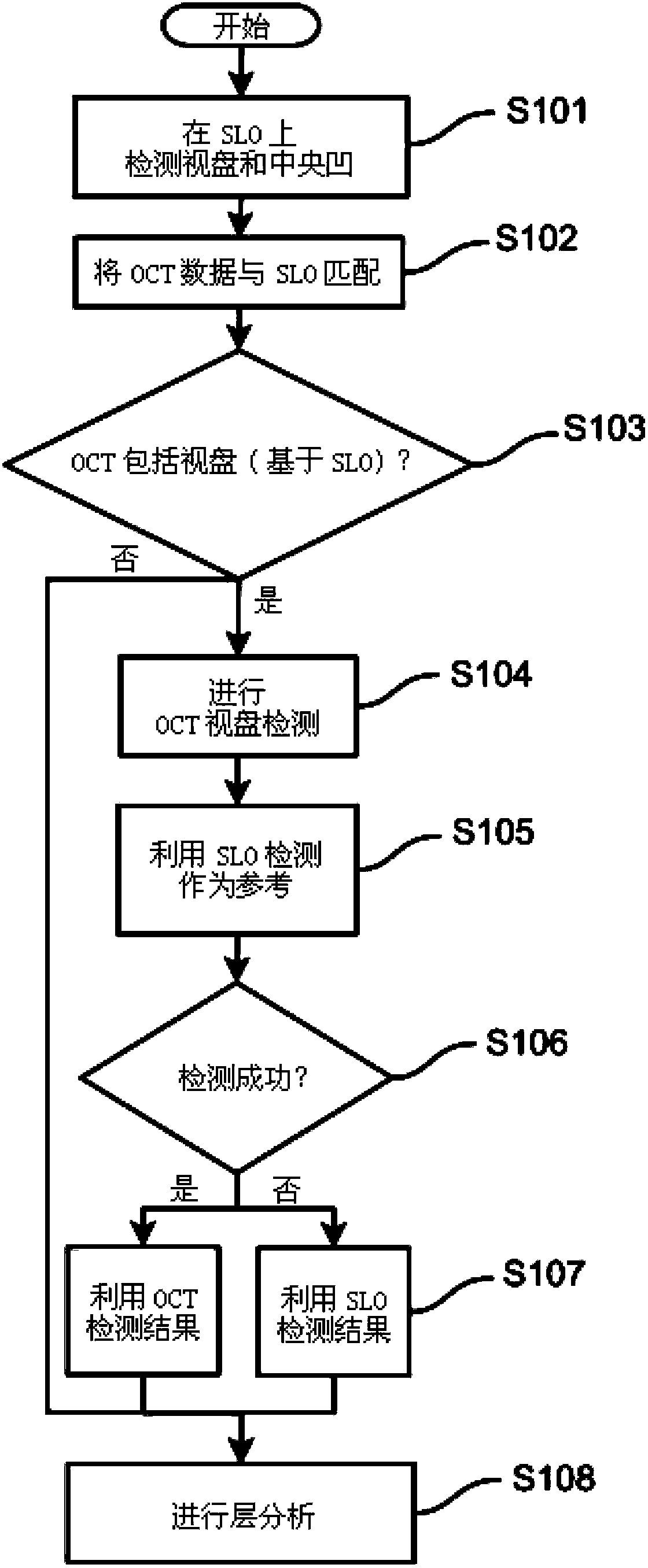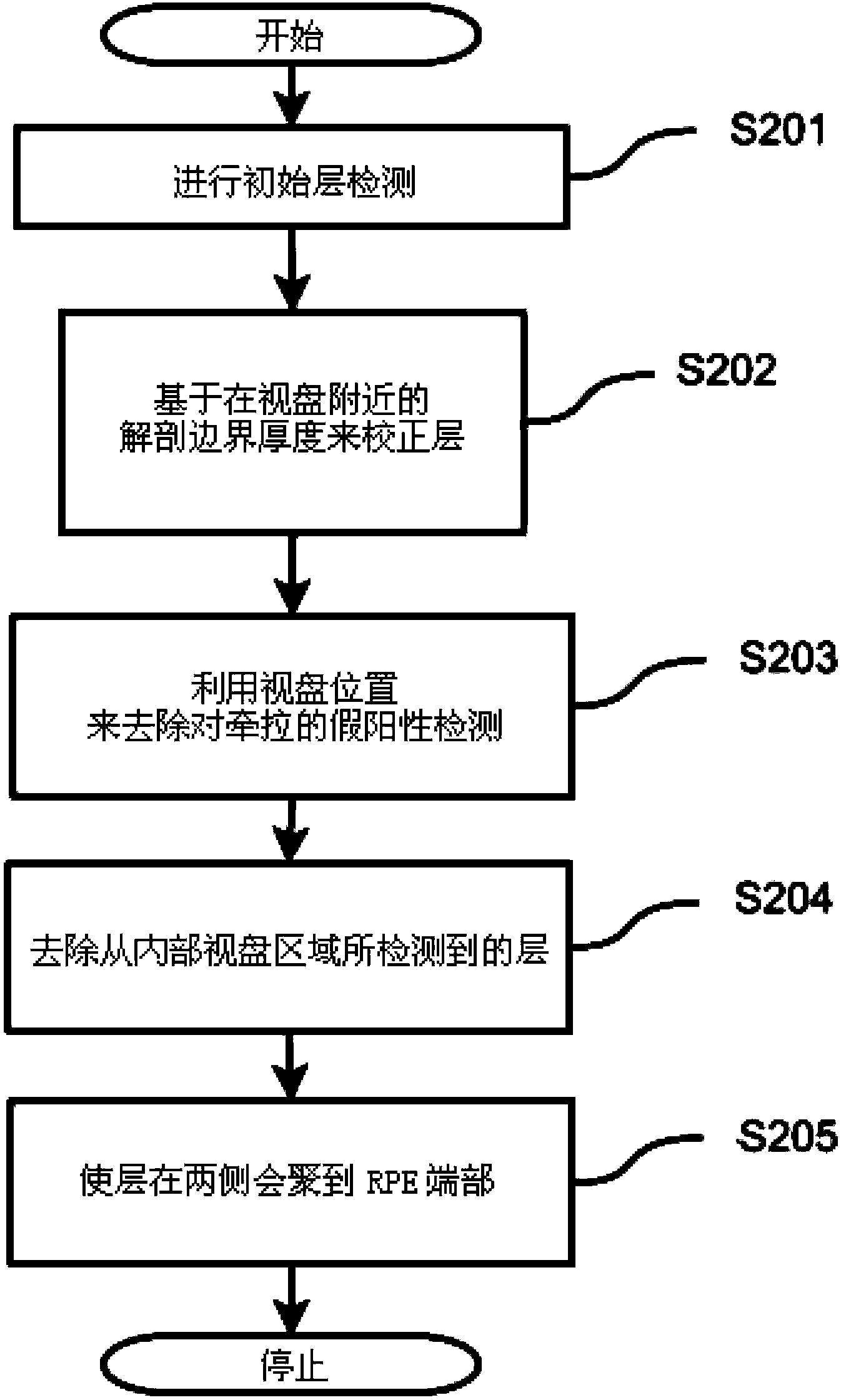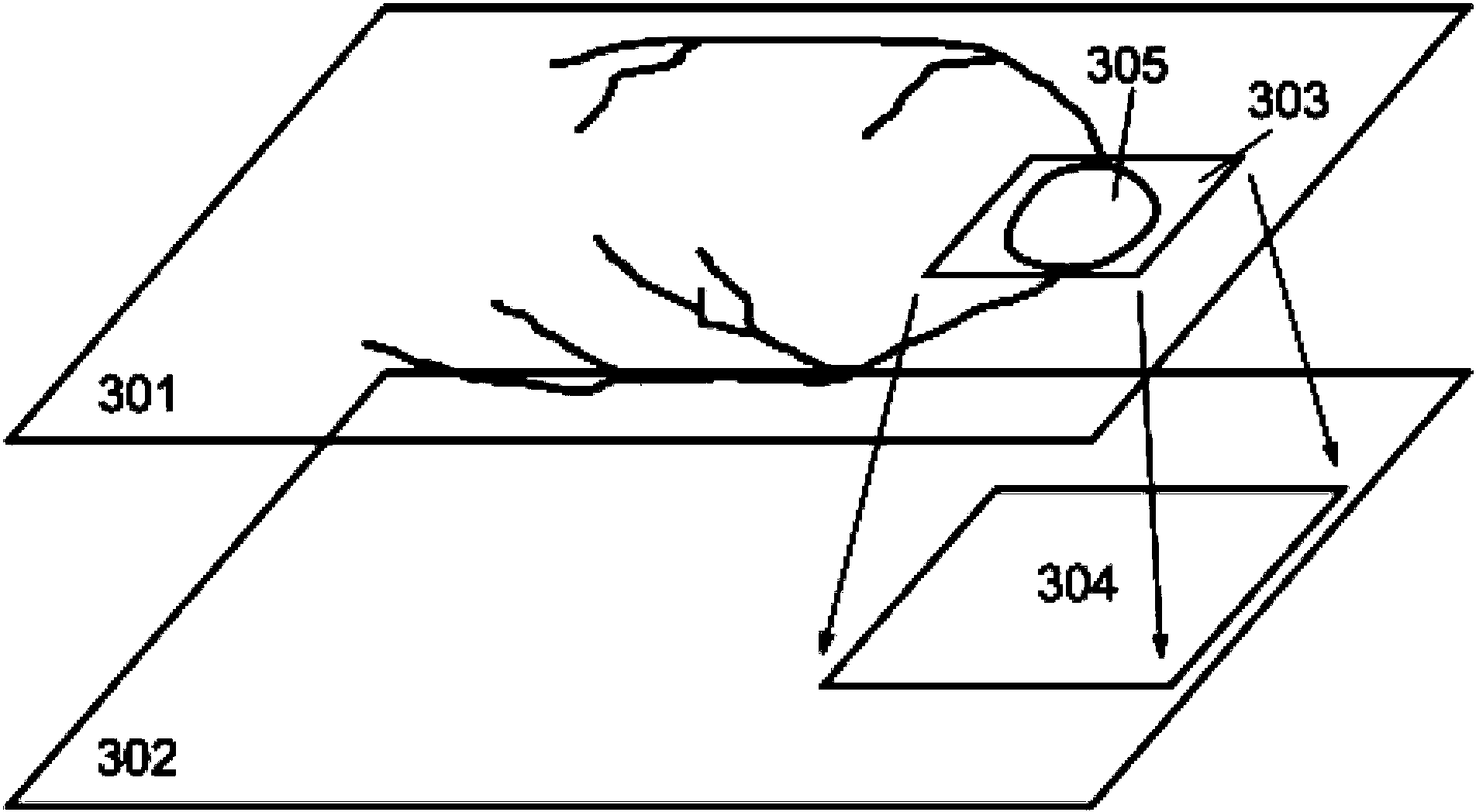Method and apparatus for identifying features of an object and tomography imaging
A technology of tomographic images and objects of interest. It is used in eye testing equipment, image enhancement, image analysis, etc. It can solve the problems of low resolution, inability to detect, and small number of 3D data.
- Summary
- Abstract
- Description
- Claims
- Application Information
AI Technical Summary
Problems solved by technology
Method used
Image
Examples
Embodiment Construction
[0043] In the first embodiment, an image of the retina is captured by the second imaging device simultaneously with OCT data acquisition. In the present embodiment, the second imaging device includes a scanning laser ophthalmoscope (SLO), which obtains an image of the retina, but it should be understood that the present invention is not limited thereto. Any suitable imaging device suitable for obtaining images of features of interest may be used. For example, for retinal imaging to identify the optic disc, a fundus camera or other similar devices suitable for retinal imaging can be used.
[0044] The captured positions of specific features of the retina are obtained based on the captured images.
[0045] refer to figure 1 , shows a flowchart of an embodiment of the present invention. In general, optic disc positions are first detected on additional images. This can be achieved by applying common image processing techniques such as edge detection filters, transforms to dete...
PUM
 Login to View More
Login to View More Abstract
Description
Claims
Application Information
 Login to View More
Login to View More - R&D
- Intellectual Property
- Life Sciences
- Materials
- Tech Scout
- Unparalleled Data Quality
- Higher Quality Content
- 60% Fewer Hallucinations
Browse by: Latest US Patents, China's latest patents, Technical Efficacy Thesaurus, Application Domain, Technology Topic, Popular Technical Reports.
© 2025 PatSnap. All rights reserved.Legal|Privacy policy|Modern Slavery Act Transparency Statement|Sitemap|About US| Contact US: help@patsnap.com



